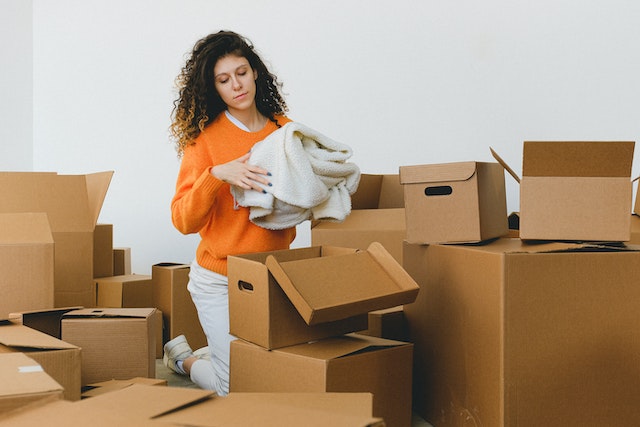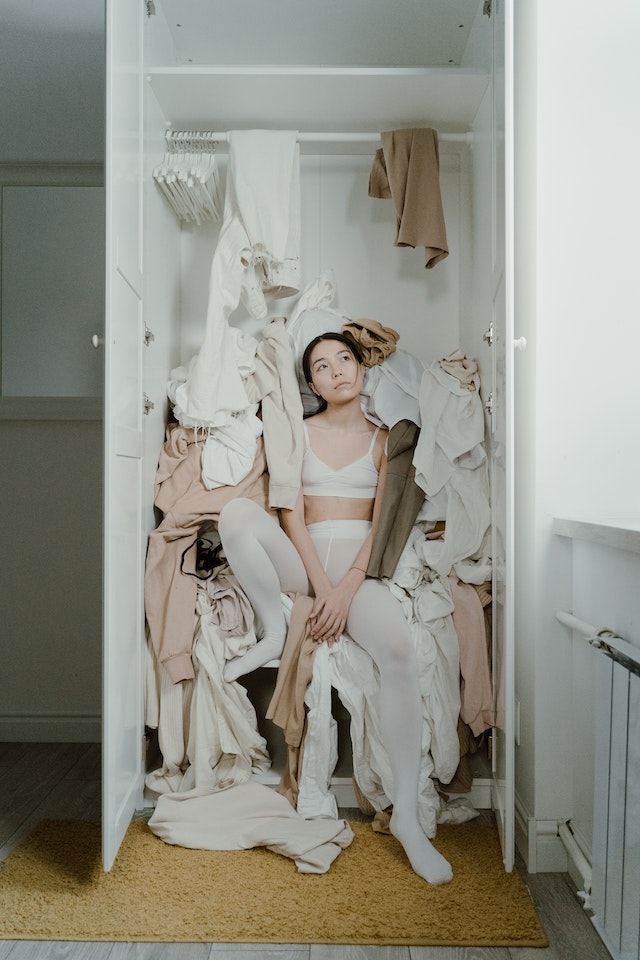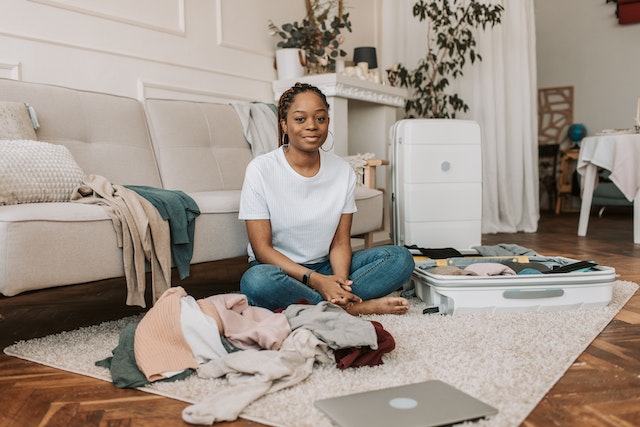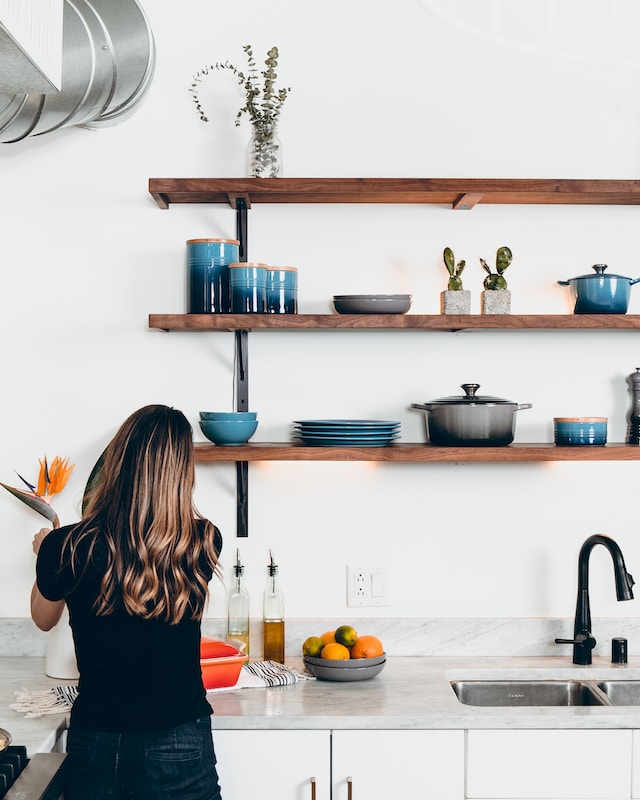
In a world where we are constantly surrounded by possessions, decluttering has become an essential practice for maintaining a peaceful and organized living environment. Decluttering involves systematically eliminating unnecessary items, organizing belongings, and creating a sense of calm in our spaces. Keeping our spaces simple and uncluttered has a profound impact on our mental well-being, productivity, and overall quality of life.
Benefits of Decluttering
Decluttering is more than just an aesthetic improvement. Over time, clutter can accumulate and become a source of stress and anxiety. This is especially true if you live somewhere with limited space. Decluttering offers numerous benefits for physical, mental, emotional, and financial health. In this section, we will explore the benefits of decluttering in depth, including increased cleanliness and hygiene, enhanced safety and accessibility, reduced stress and anxiety, improved focus and productivity, saving money by avoiding unnecessary purchases, and the potential for selling unwanted items.
Physical Benefits
Increased cleanliness and hygiene: Cluttered spaces can create habitats for dust, bacteria, and pests, which can lead to health concerns such as allergies, respiratory infections, and even a weakened immune system. By decluttering, you can reduce the number of surfaces where dust and bacteria can accumulate, making it easier to maintain a cleaner and healthier living space.
Enhanced safety and accessibility: Cluttered spaces can also be hazardous, increasing the risk of accidents such as falls and trips. By decluttering, you can create a safer and more accessible living space, reducing potential hazards and making it easier to navigate throughout your home.
Mental and Emotional Benefits
Reduced stress and anxiety: Clutter can be a significant source of stress and anxiety. A cluttered space can make it difficult to relax and focus, leading to overwhelming feelings of stress and anxiety. By decluttering, you can reduce the amount of visual and mental clutter, creating a more calming and relaxing living space.
Improved focus and productivity: Clutter can be a significant distraction, making it difficult to stay focused and productive. By decluttering, you can create a more organized and efficient living space, allowing you to focus on tasks and increase your productivity.

Financial Benefits
Saving money by avoiding unnecessary purchases: Cluttered spaces can lead to duplicate purchases, as items become lost or forgotten. By decluttering, you can take stock of what you already own, reducing the likelihood of purchasing unnecessary items in the future.
Potential for selling unwanted items: Decluttering can also provide an opportunity to sell unwanted items, potentially generating extra income. Items in good condition can be sold online or through garage sales, providing a financial incentive to declutter.
The Decluttering Process
Decluttering can be an overwhelming task, especially if you’ve been hoarding things for years. You may not know where to start and what to get rid of, but the end result is always worth it- a simple and uncluttered space. In this section, we’ll discuss the decluttering process and share some tips to help you make the most of your cleaning journey.
Assess your Space
Before you start decluttering, you need to take a good look at the space you want to organize. Identify the areas that need the most decluttering and the specific items that need to be sorted. This might mean going through each room in your home or office and making a list of every item you own. The goal is to know what you have, what you need, and what you can let go of.
In order to successfully declutter a space, it’s important to set specific goals and priorities. Here are some steps to help you define what you want to achieve through decluttering:
Defining What You Want to Achieve Through Decluttering:
Before you begin decluttering, take some time to reflect on why you want to do it. These reasons will motivate you and help you make decisions about what to keep and what to get rid of. Some common goals people have when decluttering are:
To create more space: Clearing out unnecessary items will help you make the most of the space you have, making it easier to navigate and enjoy your environment.

To reduce stress: Having a clutter-free space can reduce anxiety and stress by helping you feel more organized and in control over your surroundings.
To simplify life: Decluttering can help you focus on what’s important by getting rid of distractions and unnecessary possessions.
To save time: Fewer possessions means less time spent looking for things or cleaning up, freeing up time for more enjoyable activities.
Prioritizing Areas or Rooms to Tackle First:
Once you’ve identified your goals, it’s important to prioritize which areas or rooms to tackle first. Here are some tips for choosing where to start:
Start small: Focus on one room or area at a time, rather than trying to declutter your entire home at once. This will prevent you from feeling overwhelmed and help you make progress more quickly.
Choose the most cluttered area: Start with the area that causes you the most stress. This could be a room that’s particularly messy, or an area where you spend a lot of time and need to be able to focus.
Choose high-visibility areas: Decluttering areas that are visible to guests or visitors can help you feel more in control of your space and make your home more welcoming.
Choose areas with sentimental value: If you have items that hold sentimental value, start with those first. These can be harder to let go of, so giving yourself time to sort through them will help you stay motivated.
Sort and Categorize
Sorting and categorizing your belongings is the backbone of decluttering. Without a clear understanding of what you own, it is impossible to make intelligent decisions about what should stay and what should go. Here, we will discuss some practical ways to categorize your possessions to streamline the decluttering process.
Creating categories for different items:
The first step in sorting your belongings is creating categories for different items. For most people, these categories consist of three major groups: Keep, Donate/Sell, and Discard.
Keep: These items are ones that you use or cherish and want to keep in your life. It can include clothes, accessories, sentimental items or anything that holds sentimental or practical value in your life.
Donate/Sell: These items are in good condition but are no longer useful or valuable to you. You can donate them to a charity organization or sell them online.
Discard: These items are ones that are worn out or no longer useful. They cannot be donated or sold and should be thrown away. This category can include items such as damaged electronics, expired medications, or old paperwork.
Applying practical decluttering techniques:
The KonMari method is a popular decluttering technique that is gaining more attention in recent years. Developed by Marie Kondo, the method uses a series of questions to help you determine if you should keep an item or let it go.
Does it spark joy? The question is geared towards the items that may be sentimental or hold a special place in your heart. It helps you to determine which items to keep and which ones to let go.
Can it be used regularly? If an item is not a special or sentimental item, you should evaluate its usefulness. If you haven’t used it recently and you can’t see yourself using it in the next six months, it may be time to let it go.
Does it fit me or my current lifestyle? Our lives and styles change, which means that some of our belongings might no longer fit in with our current phase of life. If an item no longer fits you, it’s better to let it go so that it can serve someone else.

Other practical decluttering techniques include:
The Four-Box Method: This method involves labeling four boxes as “keep,” “throw away,” “donate,” and “store.” As you go through your belongings, place them in one of the four boxes.
One in, One Out Rule: This rule dictates that for every new item you bring into your home, you should get rid of one item.
Closet Hanger Method: Turn all your clothes hangers to face the same direction. As you wear clothes, put them back in the closet with the hanger facing the opposite direction. After six months or a year, donate the clothes that are still facing the original direction.
Making Decisions and Letting Go
One of the most challenging aspects of decluttering is making decisions about what to keep and what to let go. It can be especially difficult when dealing with sentimental items or possessions that hold emotional attachments. In this section, we’ll discuss strategies for making tough decisions and dealing with sentimental items.
Strategies for Making Tough Decisions
When deciding what to keep and what to let go of, there are several strategies you can use to help you make tough decisions:
Take your time: Don’t rush the process of making decisions. Take the time to think through each item and its importance in your life.
Use the 80/20 rule: The 80/20 rule suggests that we only use 20% of our possessions 80% of the time. Use this as a guideline when deciding which items to keep.
Consider the cost of keeping: Think about the cost of storing and maintaining items that you rarely use. This includes both physical space and emotional energy.
Evaluate the usefulness: Ask yourself if an item serves a purpose in your life. If it doesn’t, consider letting it go.
Imagine your ideal life: Envision the life you want to live and consider if keeping an item aligns with that vision.
Consider the environmental impact: Think about the impact of discarding or keeping an item on the environment.
Dealing with Sentimental Items and Emotional Attachments
Sentimental items can be the most difficult to let go of in the decluttering process. Here are some strategies for dealing with sentimental items and emotional attachments:

Give yourself permission to grieve: It’s okay to feel sad when letting go of a sentimental item. Give yourself permission to grieve and process your emotions.
Take a picture: If the item holds emotional value, consider taking a picture of it before letting it go. This way, you can still have the memory without the physical item.
Focus on the memories: Remember that the memories associated with the item will always be with you, even if you no longer have the physical object.
Consider passing down: If the sentimental item has value to someone else in your family, consider passing it down to them. This way, the item can continue to hold meaning for future generations.
Repurpose the item: If the sentimental item has practical use, consider repurposing it in a way that aligns with your current needs.
Prioritize: Remember that sentimental items are important, but they should not take up valuable physical or emotional space if they are not serving a purpose in your current life. Prioritize which ones are truly valuable and give them a designated space.
Organize What’s Left
Now that you’ve gone through the decluttering process and gotten rid of the unnecessary items, it’s time to organize what’s left. The key to maintaining a clutter-free space is to ensure that everything has a designated space. This section will provide you with tips on how to organize what’s left.
Categorize and Group Similar Items
Start by grouping similar items together. This makes it easier to find what you’re looking for, and it also helps you decide where to store items. For instance, group all your kitchen items together. This includes dishes, glasses, utensils, pots, and pans. Once you’ve grouped your items, you can then decide where each group will go.
Use Storage Containers
Storage containers come in various shapes, sizes, and materials. They are incredibly helpful in organizing items. For example, you can use a plastic container to store all your cleaning supplies. Storage containers make it easy to find what you’re looking for, and they also make it easier to clean as everything can be removed at once.
Label Everything
Label each container and box clearly to avoid confusion. This will save you time in the long run, and you won’t have to rummage through everything to find what you need. Labeling also helps to keep things organized and in their designated spot. Use a marker or label maker to write the name of the items on the box.
Make Use of Shelves
Shelves are perfect for storing items you frequently use. You can use shelves to store books, clothing, shoes, and even kitchen items. They’re also great for displaying items and keeping them off the floor. You can install shelves in your closet, laundry room, or even in your garage.
Hooks and Hangers
Hooks and hangers are perfect for storing items that you need easy access to. You can use them to hang your coats, hats, and bags. Hooks can also be used in the bathroom to hang towels and robes. You can even install hooks on the inside of your cabinets to hang your pots and pans.
Create a System
Once you’ve organized everything, it’s important to create a system that works for you. Determine what items you use frequently, and ensure they’re easily accessible. Items you rarely use can be kept in less accessible places. This will make life easier, and you won’t have to search for items.

Tips and Strategies for Maintaining a Simple and Uncluttered Space
Congratulations on successfully decluttering your space! Now that you have achieved an organized and uncluttered environment, it is important to continue to maintain it. In this section, we will outline some tips and strategies for maintaining a simple and uncluttered space.
Create a Cleaning Routine
One of the easiest and most effective ways to maintain a clean and organized home is to create a cleaning routine. This includes setting a regular schedule for cleaning and organizing tasks, such as doing the dishes, laundry, and cleaning the bathroom. Write down a schedule that works best for you, and stick to it as much as possible. By sticking to a routine, you can avoid falling behind on tasks and feeling overwhelmed.
Assign a Home for Everything
A key factor in maintaining an uncluttered space is making sure that everything has a designated home. Assign a specific place for all your possessions and make sure they are always returned to their proper place after use. This will make tidying up and finding things much easier and faster. Use storage solutions such as containers, baskets, or shelves, to keep things organized.
Adopt the One-In-One-Out Rule
To prevent clutter from building up, implement the one-in-one-out rule. For every new item you bring into your home, try to let go of one item. This not only keeps clutter at bay, but it also saves space and can help prevent impulse purchases.
Declutter Regularly
Decluttering periodically can help prevent buildup and keep your space clean and organized. Set a regular schedule to go through your possessions and get rid of items that are no longer serving a purpose, or that you no longer use or love. This could be done seasonally or bi-annually and helps you stay on top of your belongings.
Stay Focused and Mindful
It is easy to accumulate items unknowingly, especially when shopping or receiving gifts. Try to stay mindful about purchases and ask yourself if you really need the item or if it will add value to your life. Stay focused on your goal of maintaining a simple and uncluttered space, and don’t let items build up.
Organize Your Digital Space
Our digital life can quickly become just as cluttered as our physical spaces. Regularly decluttering emails, files, and other digital media can help us feel more organized and in control. Set a schedule to delete unwanted messages and files, or archive important ones to keep your digital life simple and efficient.

Make it a Family Effort
Getting the whole family involved in maintaining a clutter-free space can make the process easier and more enjoyable. Make it fun, by setting goals, having a competition or working together for a reward. This not only helps keep everyone organized, but it also fosters a sense of responsibility and ownership in the process.
Maintaining a simple and uncluttered space offers numerous benefits for physical, mental, emotional, and financial health. The key to achieving and maintaining an organized space is creating a routine and sticking to it, assigning a home for everything, adopting the one-in-one-out rule, regularly decluttering, staying focused and mindful, organizing your digital space, and making it a family effort. By implementing these tips and strategies, you can enjoy the benefits of a clutter-free environment and live a more peaceful and productive life. Remember, decluttering is not a one-time event, but a process that requires ongoing attention and effort. With dedication and persistence, you can create a space that inspires and energizes you, and bring a sense of calm and meaning to your daily life.
